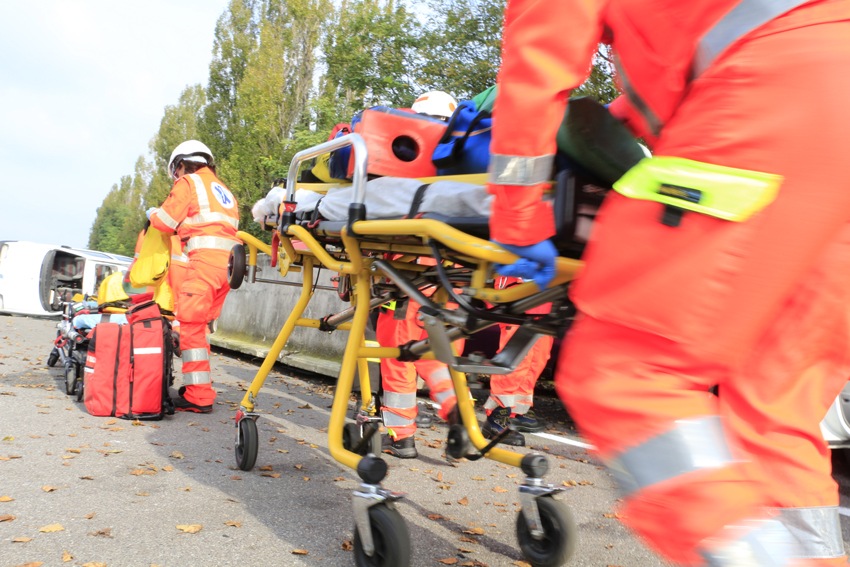
Top 10 Ambulance Equipment
When an emergency strikes and the hospital is too far, ambulances save lives on the go. First responders must dispatch in case any emergency occurs and the quality of ambulance equipment is essential.
These ambulances are fully equipped to handle any situation: be it a stroke, a fall from the stairs or gunfire wound. But do you know what kind of ambulance equipment are in these vehicles that bring back people from the brink of death? Apart from heavy-duty batteries that make vehicles working, following are the equipment that one will always find in an ambulance:
1) Ambulance Equipment: ECG monitor and a Defibrillator
An ECG monitor keeps track of the vital signs of the patient transported. A defibrillator is used to stabilise a heart undergoing cardiac arrest or to revive a crashing patient.
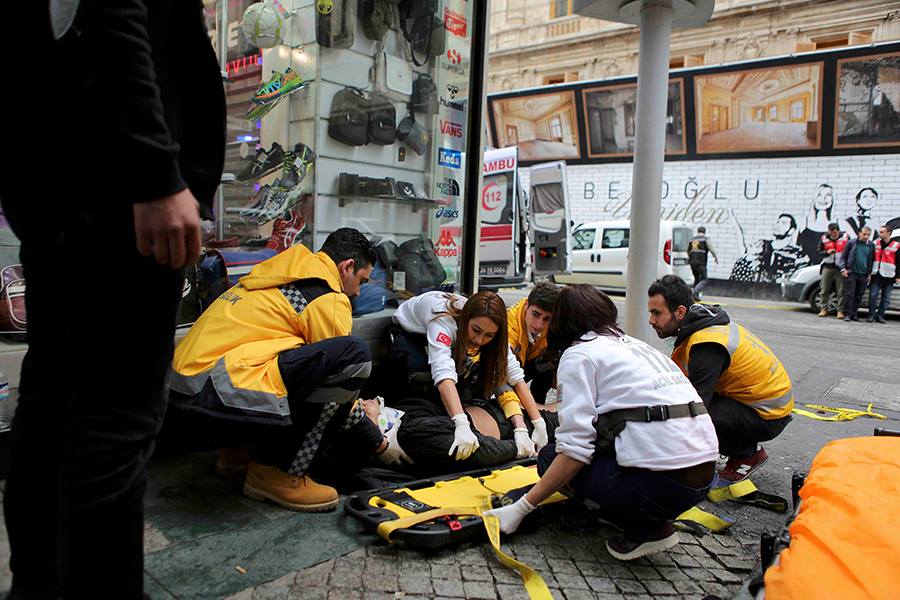
2) Spinal board
This ambulance equipment provides a system of immobilisation and transportation of the patient with suspected spine trauma. The spinal board permits the first responders to lift the patient during extrication or transportation in difficult conditions.
3) Transport Ventilators
Automatic transport Mechanical ventilator is a piece of equipment meant to take the place of bagging (manual ventilation) when a patient who cannot breathe independently is being moved to a hospital.
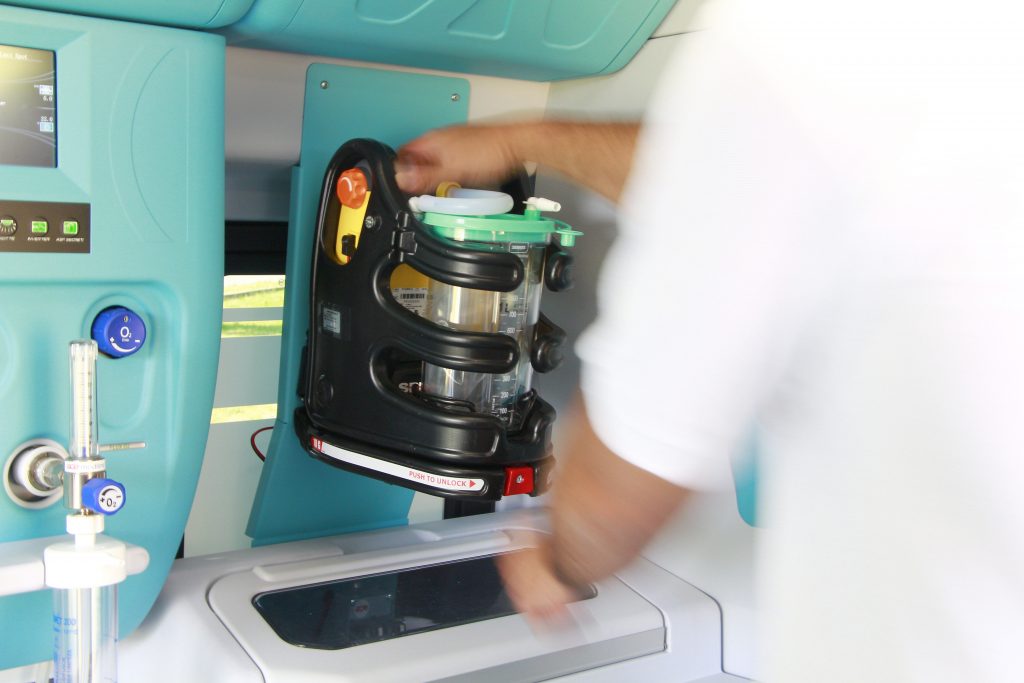
4) Suction Unit
A suction unit comes in use when the patient is bleeding internally and needs the building pressure on vital organs to be relieved. It is also used to remove fluids that have collected inside the body or the mouth and in situations that need an emergency procedure in the ambulance equipment before reaching the hospital.
5) Infusion Syringe Pumps
An infusion (or withdrawal) syringe pump is equipment that can either infuse or withdraw liquid into or from the patient’s body, at a defined flow rate with controlled target volumes.
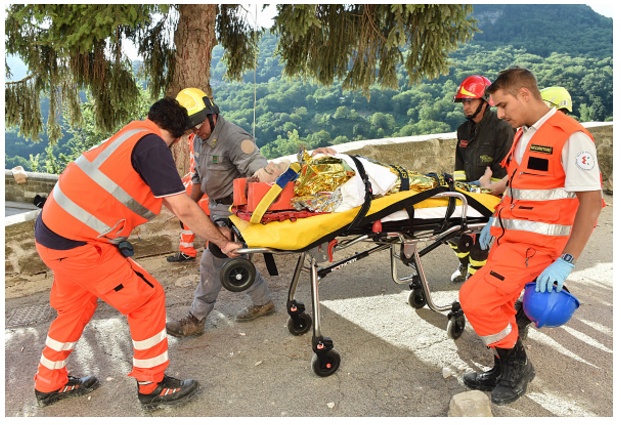
6) Ambulance Equipment: Cot, Patient Shifting Rolls, and Ambulance Chair
Cots are of great use when the patient is located on a higher floor of a building, cannot move or may worsen their condition with movement. Patients with spinal injuries receive special spinal support boards and collars during transportation. Shifting rolls are important if your patient is not a traumatic one, but he’s not able to move with its own legs. However, the most used transport device from the patient home to the back of an ambulance is the ambulance chair.
7) A Nebulizer
A nebuliser is meant to vaporise liquid medication into a mist so that the patient can inhale it on the way to the hospital. This is used when medicine has to be administered critically to the patient for immediate relief.
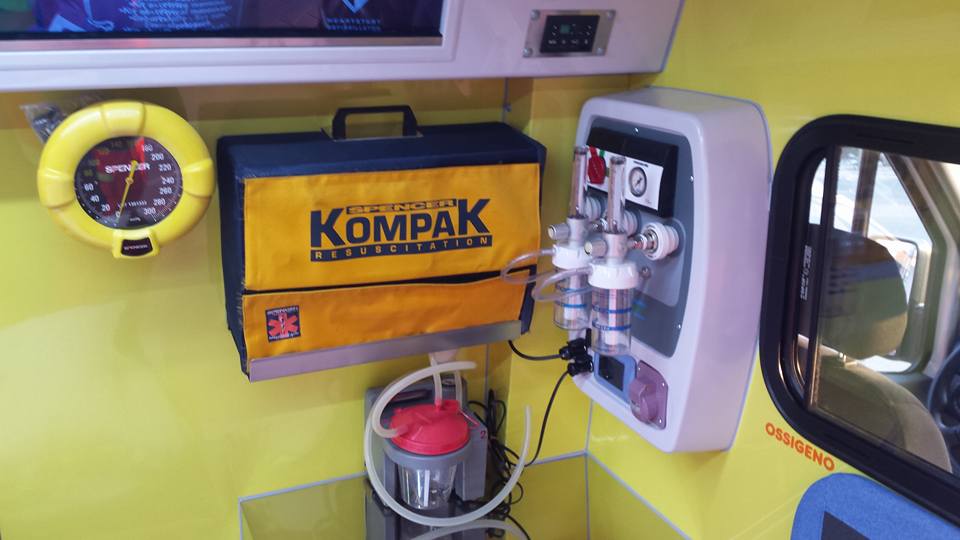
8) Oxygen Supply Units
Oxygen supply units are one of the most vital pieces of ambulance equipment as they can be used in fire survivors, patients with breathing difficulties such as asthma or to revive a collapsed patient.
9) A Sphygmomanometer
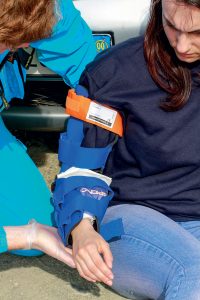
10) Ambulance Equipment: rescue splints and bandages
The presence aboard an ambulance of these items is usual. Thanks to them, immobilising joints is efficient and easy. The most common splints have different shapes and measures so that they can adapt at best to the fractured or sprained joints.
The devices explained above are the ten most essential parts of an ambulance. Still, there are many more that help patients stabilisation until they are transported to an emergency centre or a hospital.
These are primary devices that you can find inside every ambulance in the world. Sometimes you could find something more, like in the paediatric ambulances, or something different, like inside the NCBR ambulances or the Anti-contamination ambulances.
Top 10 Ambulance Equipment: READ ALSO
Does Uganda Have An EMS? A Study Discusses The Ambulance Equipment And Trained Professionals Lack
Water Rescue Plan And Equipment In The US Airports
Discovering Ambulance Equipment And Solutions Inside Emergency Vehicles In Indonesia
SOURCES


